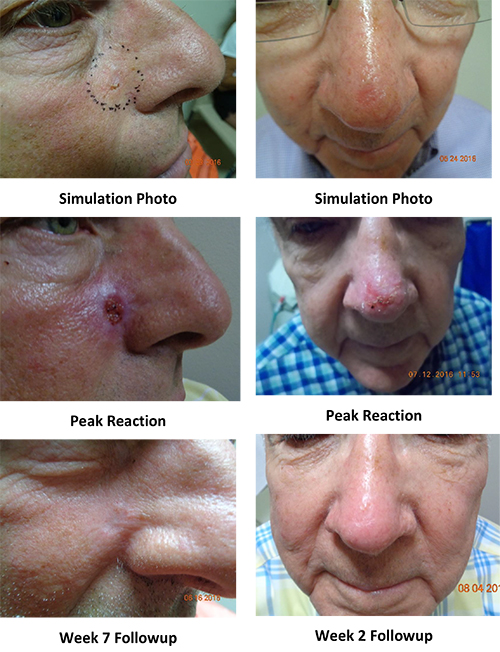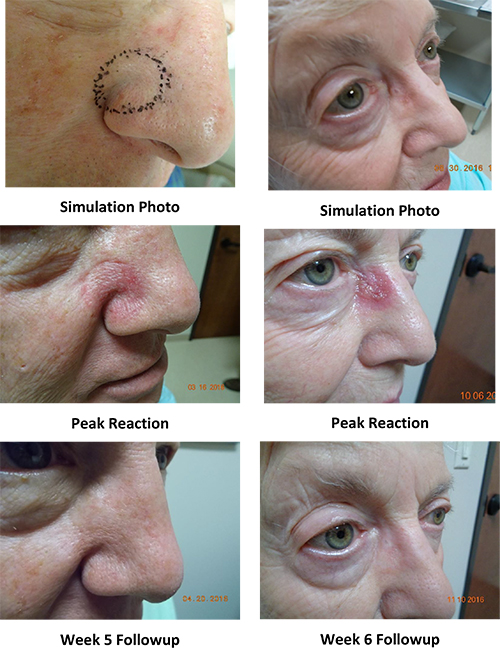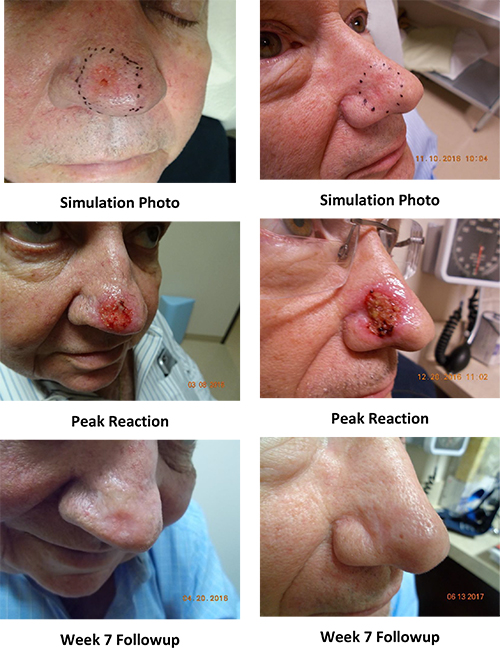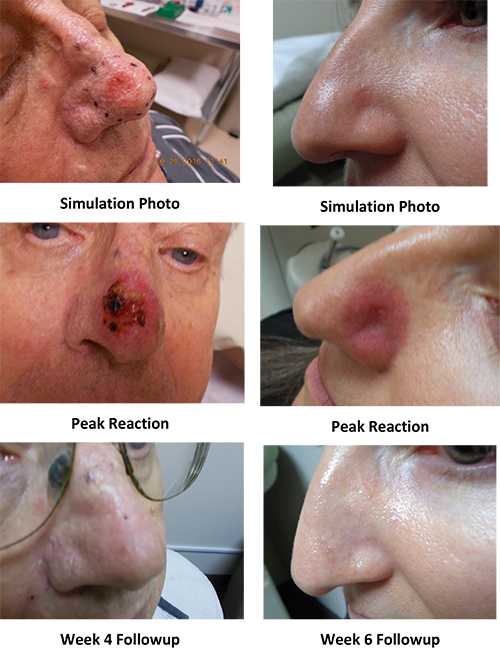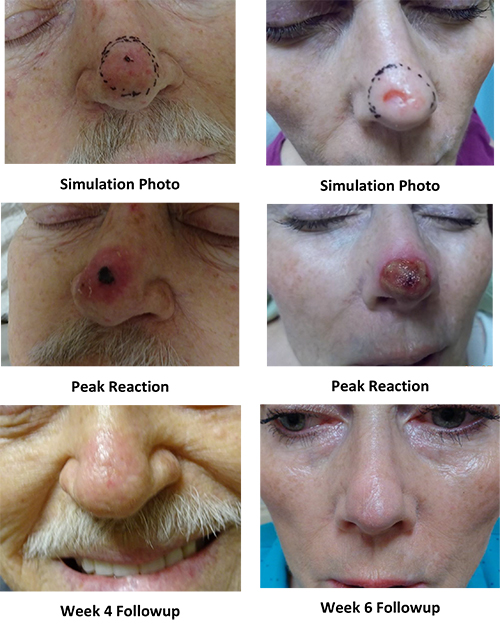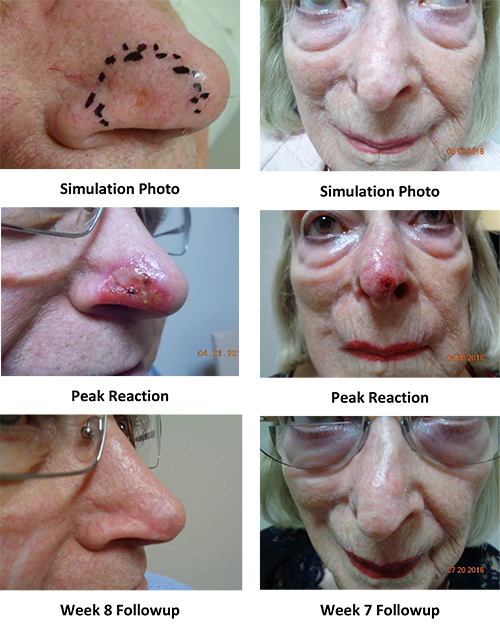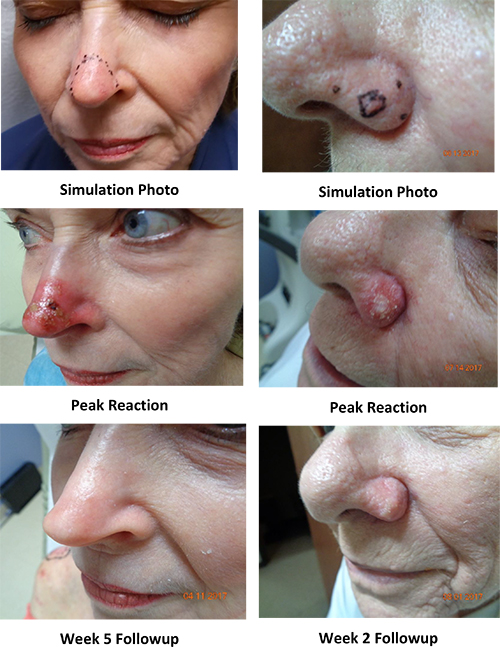Gentle X-Ray Therapy
(Brachytherapy)
Surgery is highly effective at treating skin cancer, however there are challenges including the potential for a noticeable scar, changes to your appearance, inability to keep up an exercise routine, healing issues, mobility challenges, discontinuing medication, etc.).
Pennoyer MD is the first and only medical practice in Connecticut to offer Gentle X-Ray Therapy (Brachytherapy), a painless, non-surgical treatment that is gentle, and only goes skin deep. There is no cutting or needless, and it is highly effective, just like surgery, at treating your skin cancer. Each treatment takes around 5-minutes, and cosmetic results are usually very good, as there is no surgery scar.
Gentle X-Ray Therapy (Brachytherapy) is a highly targeted radiation therapy using the world’s smallest X-ray tube that brings the radiation source close to the cancerous tissue, minimizing exposure to healthy tissue and organs. This approach is particularly effective for treating non-melanoma skin cancers and other conditions requiring precise, localized treatment.
Key Benefits:
- Targeted Treatment: Directs radiation to the size and shape of the cancerous area.
- Minimal Side Effects: Helps spare healthy tissue and organs.
- Quick Treatment: Each session typically lasts 3-6 minutes.
- High Cure Rate: Offers a 98-99% cure rate.
- Resume Daily Activities: No down time, maintain exercise routine.
- Treat Cosmetically Sensitive Areas: Ears, eyelids, nose, lips, cheeks, temples, scalp, etc.
- Indicated for Patients with Medical Issues: Including those with COPD, CAD, liver disease, renal failure, diabetes, poor wound healing, poor circulation in lower extremities.
Treatment Process:
- Initial Consultation and Biopsy: Patient undergoes biopsy to confirm skin cancer type.
- Treatment Planning: Simulation and consultation for treatment planning.
- Treatment Sessions: Daily sessions scheduled after initial planning. Treatments are typically delivered twice a week over 4 weeks and are completed in 3-5 minutes.
- Post-Treatment Care: Unlike surgery, there is no downtime and you’ll be able to go about your daily activities right after treatment. Area may experience redness (like a sunburn), peeling, and mild bleeding (if bumped). These subside after treatment is complete. For detailed after-care instructions, please refer to this PDF document.
- Follow-Up: Monitoring and support during the healing process. Note: For this treatment to be as effective as possible, patients need to show up for all scheduled appointments without having large unscheduled gaps between treatments. The treatment will continue to work for 2 weeks after the final treatment and then begin to heal.
Insurance and Payment
Most insurances cover this, and insurance preauthorization can be facilitated by our office staff. We ensure a smooth process for all necessary paperwork related to treatment. For Medicare and supplemental, there is typically no cost to you.
Gentle X-Ray Therapy vs Gentle Cure
- Fewer Treatments: Gentle Cure: 20 | Gentle X-Ray Therapy: 10-12, most do 8-10 sessions.
- Less scatter radiation: The therapist is even in the room with you during treatment. The maximum amount of healthy tissue is spared from scatter radiation because the X-ray source is as close to the cancer cells as possible.
- Multiple Peer Reviewed Studies: Proof this type of treatment with 98+% effectiveness.
- ARRT Licensed Radiation Therapist delivers the treatment.
- Full Medical Staffing: Treatment is overseen by Dr. Pennoyer, a radiation oncologist, medical physicists, and multiple licenses radiation therapists to ensure safety. Gentle Cure does not utilize the same amount of medical staffing to ensure safety and efficacy.
Patient Criteria & Indications For Clinical Use
- Cosmetically sensitive area (ears, eyelids, medial & lateral canthus, nose, cheeks, temples, lips)
- Medically unfit (ie. COPD, CAD, liver disease, renal failure, etc.)
- Avoid possible need for skin grafts (scalps)
- Anticoagulants
- Diabetes
- Poor wound healing sites (pretibial leg regions)
- Pain avoidance
- Scar avoidance
- Functional impairments (hands, feet)
- Patient preference
- NMSC staged at T1 & T2
- 4cm or less surface area
- 5mm deep or less (typically 3mm)
Potential Side Effects
Acute side effects – starting around treatment number 4
- Erythema in the lesions site with possible moist desquamation and bleeding
- This will range from a bad sunburn to a burn from a hot pan (Aquaphor and Tegaderm are recommended way to minimize side effects. This will occasionally require antibiotics such as Mupirocin or Silvadene)
- This effect will peak around 10 days post treatment and then resolve relatively quickly
- Erythema is usually completely resolved 6-8 weeks post treatment
Possible long-term side effects
- Hypopigmentation – appears to be more likely in Fitzpatrick skin types 4, 5, 6
- Possible stricture or wound healing issues requiring intervention
- Healing issues more likely to occur in non-compliant patients
- 1-3% risk of secondary malignancies in the treatment area in 15-20 years
- This is only limited to the treatment area and the correction is surgery
Before | After Gallery
To learn more about available treatments or to schedule an appointment, please complete the form below or call the office at 860.243.3020.

